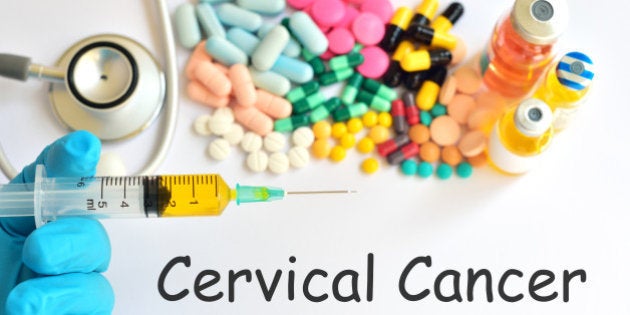
India accounts for one-third of the cervical cancer deaths globally. In absolute terms it means that there are over 130,000 new cases of cervical cancer every year and nearly 74,000 deaths.
This cancer begins in the cervix which is the mouth of the uterus or womb, and one of its most important causes is the Human Papillomavirus (HPV). HPV is a group of over 150 viruses that cause warts in various parts of the body. They are spread through skin-to-skin contact and can therefore be acquired even in the absence of sexual intercourse. There are, however, other factors also that result in the progression of an HPV infection in the cervix to cancer. These include extended use of hormonal contraceptives, initiation of sexual activity at a young age, multiple sex partners, tobacco consumption and co-infection with HIV.
The initial signs of cervical cancer are not specific and include vaginal discharge with a foul odour, blood in the vaginal discharge and pain in the lower abdomen. Once the disease progresses, symptoms can include bleeding during intercourse, pain and loss of weight.
Parents need to be aware that an anti-HPV vaccine can be effective in checking the incidence of cervical cancer....
Several interventions can help to reduce India's cervical cancer burden.
Firstly, it is important to create awareness among girls and women about the dangers of HPV infections and the possibility of developing cervical cancer. Education needs to be imparted about the importance of initiating sexual activity at a later age as well as maintaining personal hygiene. Women also need to be informed about the importance of getting themselves screened at appropriate intervals. Furthermore, parents need to be aware that an anti-HPV vaccine can be effective in checking the incidence of cervical cancer and should be administered to girls between nine-13 years of age. According to a survey, less than 20% of Indian women in rural areas are aware about cervical cancer which highlights the need for large-scale and locally contextualized awareness campaigns to be conducted across the country.
Secondly, increasing coverage of the anti-HPV vaccine is important. The vaccine is recommended for young girls although it can be administered to women as old as 45 years of age. It is given as three doses which confer immunity against HPV infections. Delhi has recently become the first state in India to begin vaccination of girls studying in Class 6 in government schools against cervical cancer. The vaccination program is expected to be expanded to all nine-13 year old girls by next year. The government is also considering including the vaccine in the Universal Immunization Program, but that might take some time to materialize. One the factors under consideration has been the cost of the vaccine. Additionally, the vaccine has had its share of controversy in India. In 2009, some deaths were reported during a project undertaken by an international NGO to administer the vaccine to girls in Andhra Pradesh and Gujarat. The matter is still in the courts. Another challenge with the vaccine is convincing parents to vaccinate their pre-pubescent daughters against a disease that is primarily spread through sexual contact.
Screening picks up pre-cancerous abnormalities in the cervix which can help to prevent or halt the development of the disease.
Thirdly, screening of girls and women for abnormalities in the cervix is also crucial. It is advised that women who are in the 21-29 age group should have a pap smear test every three years for screening purposes and women who are over 30 years should have it every five years. Given the present challenges with administering the vaccine to large numbers in India, screening, especially using low-cost methods, assumes great importance. Screening picks up pre-cancerous abnormalities in the cervix which can help to prevent or halt the development of the disease.
It is believed that every seven minutes, a woman in India loses her life to cervical cancer. This is an unacceptable statistic and all possible measures must be taken to reduce the burden of this disease along with the social, economic and psychological harms it causes. It is also imperative for us as women to understand the devastating consequences of this disease and what we can do to prevent it.



Contact HuffPost India
Also see on HuffPost:
